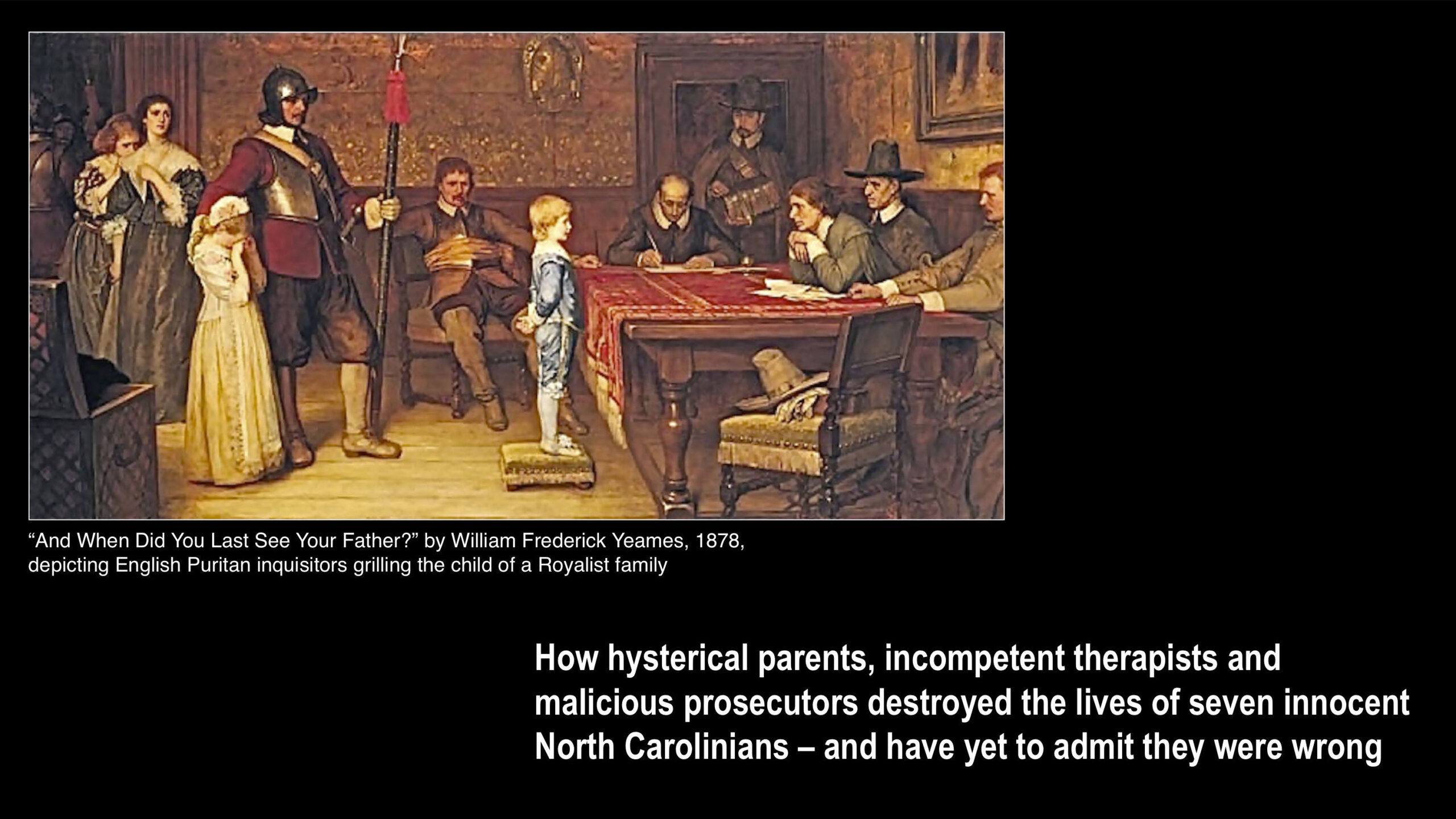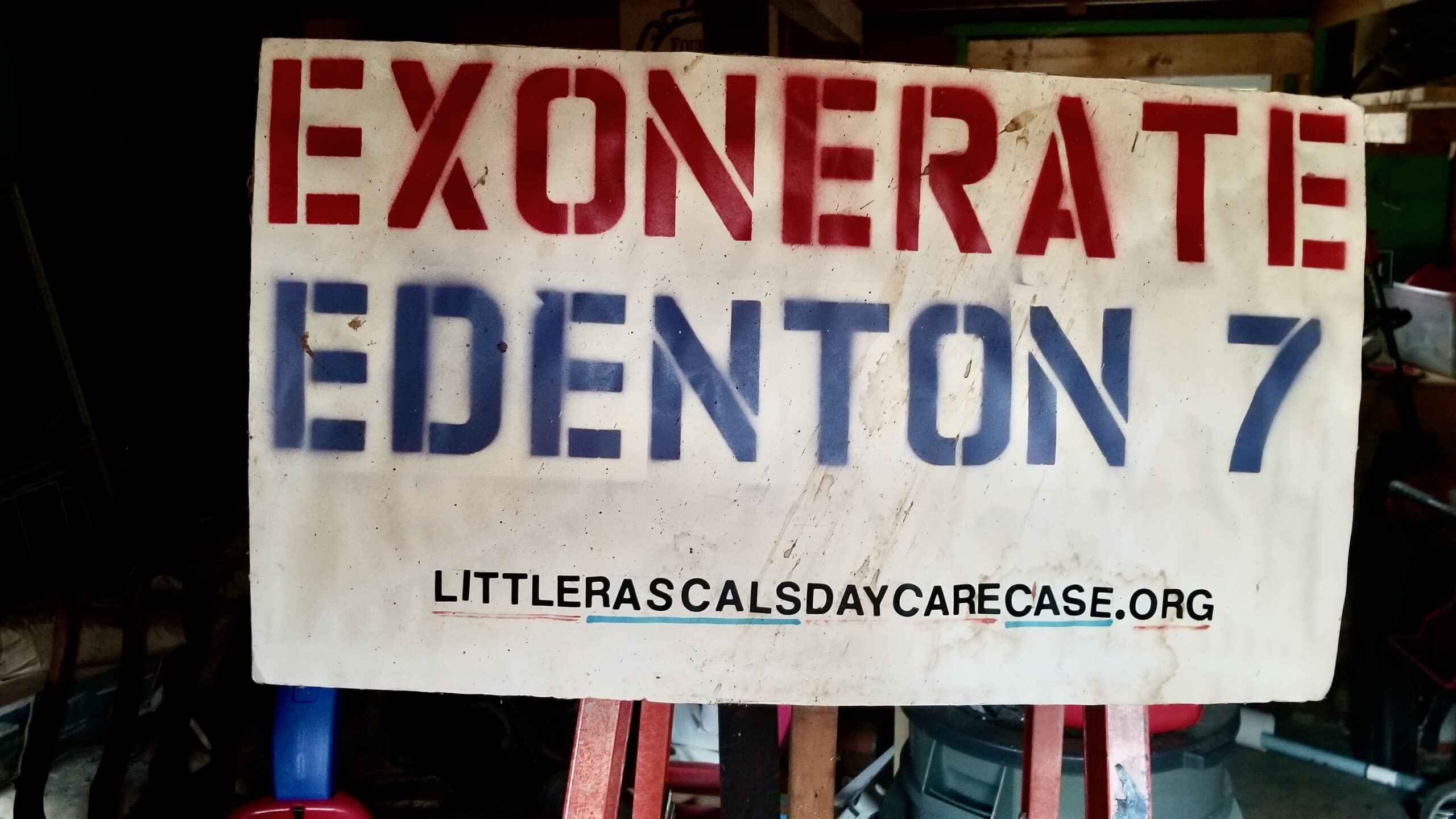Rascals case in brief
In the beginning, in 1989, more than 90 children at the Little Rascals Day Care Center in Edenton, North Carolina, accused a total of 20 adults with 429 instances of sexual abuse over a three-year period. It may have all begun with one parent’s complaint about punishment given her child.
Among the alleged perpetrators: the sheriff and mayor. But prosecutors would charge only Robin Byrum, Darlene Harris, Elizabeth “Betsy” Kelly, Robert “Bob” Kelly, Willard Scott Privott, Shelley Stone and Dawn Wilson – the Edenton 7.
Along with sodomy and beatings, allegations included a baby killed with a handgun, a child being hung upside down from a tree and being set on fire and countless other fantastic incidents involving spaceships, hot air balloons, pirate ships and trained sharks.
By the time prosecutors dropped the last charges in 1997, Little Rascals had become North Carolina’s longest and most costly criminal trial. Prosecutors kept defendants jailed in hopes at least one would turn against their supposed co-conspirators. Remarkably, none did. Another shameful record: Five defendants had to wait longer to face their accusers in court than anyone else in North Carolina history.
Between 1991 and 1997, Ofra Bikel produced three extraordinary episodes on the Little Rascals case for the PBS series “Frontline.” Although “Innocence Lost” did not deter prosecutors, it exposed their tactics and fostered nationwide skepticism and dismay.
With each passing year, the absurdity of the Little Rascals charges has become more obvious. But no admission of error has ever come from prosecutors, police, interviewers or parents. This site is devoted to the issues raised by this case.
On Facebook
Click for earlier Facebook posts archived on this site
Click to go to
Today’s random selection from the Little Rascals Day Care archives….
Click for earlier Facebook posts archived on this site
Click to go to
Today’s random selection from the Little Rascals Day Care archives….
How to uncover ritual abuse: a foolproof recipe
Oct. 17, 2012
“Little Rascals is a most important case, because it demonstrates how the mind set of interviewers can be transmitted to the children and persuade them to disclose events that never happened. A San Diego grand jury which investigated child abuse observed:
Of particular interest is the information received about the Little Rascals case in North Carolina. Eighty-five percent of the children received therapy with three therapists in the town; all of these children eventually reported satanic abuse. Fifteen percent of the children were treated by different therapists in a neighboring city; none of (these) children reported abuse of any kind after the same period of time in therapy.
“In effect, the Edenton (multiple victim, multiple offender) case was a real-life replication of the type of laboratory experiment that could never be done for ethical reasons:
- Select a town or city in any area of the U.S. or Canada.
- Take 90 children, and divide them into two equally sized test and control groups.
- Have the test group interrogated by therapists who believe in ritual abuse, using direct and repeated questions.
- Have the control group independently interrogated by therapists who are skeptical of ritual abuse using general questioning.
- Compare rates of disclosures of ritual abuse from the two groups. “
The probable result would be that close to 100% of the test group and about 0% of the control group would reveal ritual abuse.”
– From “Ritual abuse cases in day care centers” on ReligiousTolerance.org, (Ontario Consultants on Religious Tolerance)
For Junior Chandler, one door opens – will another open?
 Nov. 16, 2013
Nov. 16, 2013
An update from Mark Montgomery, Junior Chandler’s appellate attorney: “[The N.C. Center on Actual Innocence] reviewed Junior’s case but could not find anything that would help him. The ‘kids’ were too young at the time to have anything helpful to say now. Of the two retarded adults who rode Junior’s bus (and testified against him), one is dead and the other incompetent.”
On a somewhat more encouraging note, Mark reports that the governor’s office has notified him that Junior’s clemency application is being considered.
Want to put in a word on Junior’s behalf? Here’s where to write:
Executive Clemency Office
4294 Mail Service Center
Raleigh NC 27699-4294
‘Yawning gaps in evidence’? Sounds familiar
Nov. 7, 2012
“Mass hysteria always makes perfect sense when we are trapped in it. It can take decades – or even longer – before the crazed irrationality of a particular episode shows itself for what it was.”
– From “When Mass Hysteria Convicted 5 Teenagers” in The New York Times (October 27)
Thanks to a new documentary by Ken Burns, the Central Park Five – all convicted of a widely publicized 1989 rape and beating – will soon return to the spotlight. According to the Times,
Burns depicts “the forces that led citizens, politicians, the media and the criminal justice system to brush past yawning gaps in the evidence in the case.”
Beyond a shared year on the timeline of wrongful prosecutions, these urban teenagers, black and Hispanic, seem to have borne few similarities to the Edenton Seven. But I could never read the words “yawning gaps in evidence” without thinking of a Little Rascals prosecution built almost entirely on the resolutely manipulated, deceitfully paraphrased testimony of children.
Santa, I know this is an unusual request, but….
 Dec. 14, 2012
Dec. 14, 2012
“Lamb, Nancy and Bill Hart. ‘Pointers on multi-victim, multi-perpetrator cases.’ American Prosecutors Research Institute 1992. Attorneys who prosecuted Little Rascals case offer advice regarding mass molestation cases.”
– Description of an 18-page how-to booklet that surely should be filed under “fantasy” or “horror” – if copies existed at all.
Unfortunately, all seem to have vanished from libraries as well as from booksellers. When I requested a copy from the National District Attorneys Association, parent of the research institute, I was told, “We only serve prosecutors, not (even) other lawyers. But… we haven’t been able to find it. So at this point, we could not even provide it to a prosecutor.”










0 CommentsComment on Facebook